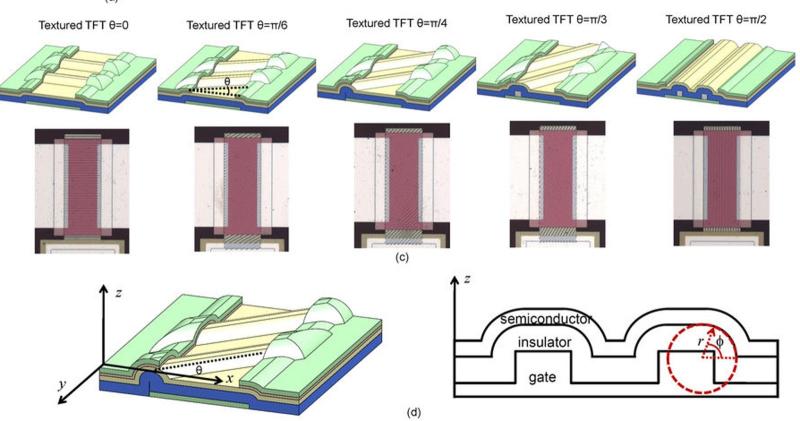
In today’s gadget-filled world of cameras, cell phones, smart watches and other lightweight and wearable devices, thin film transistors are commonplace. They are made by stacking thin layers of semiconductors, insulators and metals. In a study published in Nature’s Scientific Reports, researchers from the Indian Institute of Science, Bengaluru, have explored how creating textures in metal films used in such transistors could help make them easy to control.
Transistors are building blocks in any electronic circuit. Circuit engineers design various types of transistors by making modifications to their structure and their functional properties. One such property is the amount of output current produced, for each unit input voltage supplied. This property is called transconductance. Increase in transconductance is possible by changing the aspect ratio of the device, but it increases the area and thus the space occupied and also the unwanted capacitance. The researchers of the study have proposed a modification in manufacturing the device that can control transconductance and also keep unwanted capacitance in control.
A thin film transistor is fabricated by depositing thin layers on metal (called gate), insulator and semiconductor on an insulator surface, most commonly glass. The researchers of the study suggest creating parallel ridges or corrugations in the metal layer. This modification, they claim, can help control the transistor properties without increasing its size. Corrugations change the length and the properties of the channel through which the current flows. Corrugations or texturing could be made parallel to the direction of flow of current or perpendicular to it or the angle could be varying continuously between these values. The gate metal is deposited in two stages, the first stage is a planar layer and the second achieves the desired texturing.
The scientists studied the effects of corrugations using simulations and experiments. They found that the transconductance increased when corrugations were along the direction of flow of the current, and gradually decreased as the angle of corrugations became perpendicular to the flow of current. They also observed and measured the current-voltage characteristics, capacitance and the minimum voltage at which the transistor begins conducting, for transistors fabricated with a corrugated gate.
The study demonstrates that corrugations can be used as a method to control transistor parameters in addition to changing the aspect ratio or the input voltage. A smooth control over flow of current is possible by controlling the angle of the corrugations. This technique can be used to improve the gain of amplifiers without changing the layout area.






